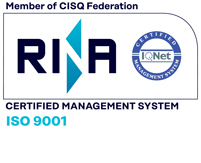Vietnam
CARBON CREDIT EXCHANGE A STRATEGIC FACTOR FOR VIỆT NAM’S ECONOMIC DEVELOPMENT
Carbon credits have been used in Việt Nam for many years, since the country implemented Clean Development Mechanism (CDM) projects under the Kyoto Protocol as early as 2008.Recently this concept has appeared in some cooperation projects with international partners to exchange emission credits, such as the North Central Region Emission Reduction Payment Agreement (ERPA), and the Biogas Project in Livestock.Việt Nam's goal is to demonstrate our efforts in implementing commitments in the Paris Agreement on climate change, creating a playground for the business sector to join with the State's efforts.State management agencies can also use this to evaluate the market as well as have tools to support the management of Việt Nam's credit transactions.The first priority is to create a motivating mechanism and a market mechanism for businesses to participate.To achieve climate goals in line with Việt Nam’s international commitments, large capital resources are needed.The carbon credit market is an important source of capital to help businesses and the country's economy transition from brown (resource-based) to green, both reducing greenhouse gas emissions and creating motivation and profits for businesses and the country.This concept is quite new to many people in Việt Nam, but in fact carbon credits have been traded since 2008 under the CDM.The participating ministries and sectors are not really proactive and do not have a strategic perspective to turn the economy from brown to green.At Techfest 2020, my colleagues and I introduced the Carbon Credit Exchange, aiming to build an exchange based on Blockchain 4.0 technology for special types of goods such as carbon credits, green certificates and green bonds.It is necessary to recognize the carbon credit market as a strategic factor to promote Việt Nam's economy in the future, in which the two pillars are Green and Digital.These are also two factors where the carbon credit exchange holds the advantages.It should be clear that our experiment is a voluntary market effort to help participating businesses contribute to the country's common goals, and support activities and commitments of the Government to international compliance markets.After testing, it gained valuable lessons and experiences, as well as adapted appropriately to Vietnamese market conditions and policies.The first lesson is that it is necessary to meet the conditions and synchronise many items to be able to support the development of both sides of the market, both the seller and the credit buyer.To successfully build carbon credit trading platforms, it is necessary to have a future vision, combined with continuous learning from existing models in the world, adapted to Vietnamese conditions.Việt Nam has great potential to build a carbon market. Currently, the rate of Vietnamese businesses understanding and implementing greenhouse gas emission inventories is very low, less than 1 per cent compared to the list of 1,912 businesses required to inventory, not to mention hundreds of thousands of companies.First of all is the domestic legal framework and international requirements.Second is the participation of stakeholders, especially businesses that are responsible for reducing emissions. The Government can make international commitments, but the actual reduction depends entirely on the efforts and participation of businesses.It is necessary to pay attention to credit prices. According to our statistics, Việt Nam has 262 projects selling carbon credits under the CDM mechanism, which are mainly hydroelectric projects.In the forestry sector, there have been a number of projects that sell credits. In six north central provinces, they sell carbon dioxide at a price of US$5 per tonne to the World Bank. There are also a few other forestry projects selling carbon dioxide at $17 per tonne. (ICE HO CHI MINH CITY)
Fonte notizia: Vietnam News




